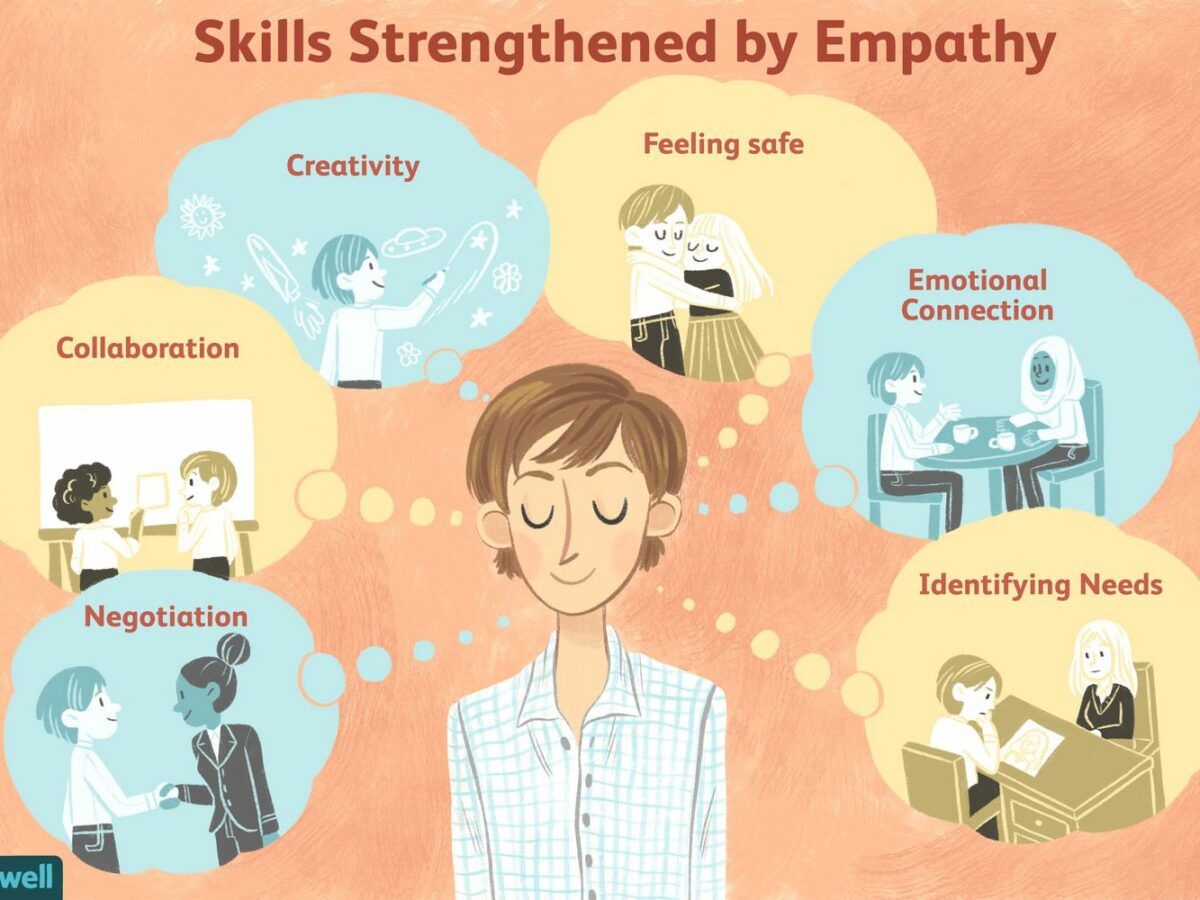Apar karuna aapka Swamiji. Mujh jaise akinchan ko aap ne sharan mein liya aur darshan bhi denge! I along with the entire family am really grateful for your gesture. Sastang pranam at your lotus feet oh revered one.
Today I am sharing some points which I learned while going through an article on empathy.
What Is Empathy?
Empathy may be described as the ability to perceive others’ feelings (and to recognize our own emotions), to imagine why someone might be feeling a certain way, and to have concern for their welfare. Once empathy is triggered, compassionate action follows automatically. There is a difference between ’empathy’ (feeling with someone) and ‘sympathy’ (feeling sorry for someone).
Empathy Can Be Taught / Learnt
We may find it hard to empathize with some people. But that doesn’t mean we can’t strengthen our empathy muscles, according to psychiatrist and researcher Helen Riess, author of the book ‘The Empathy Effect’. She uses the acronym EMPATHY to outline the steps of her program:
E: Eye contact: An appropriate level of eye contact makes people feel seen / touched and improves effective communication. Helen recommends focusing on someone’s eyes long enough to gauge eye color (it is a tricky one, but our eye color changes as per our emotion!), and making sure you are face to face when communicating. Any obstacle in the path of eye contact may not render effective communication.
M: Muscles in facial expressions. As humans, we often automatically mimic other people’s expressions without even realizing it. By being able to identify another person’s feelings—often by distinctive facial muscle patterns—and mirroring them, we can help communicate empathy.
P: Posture. Sitting in a slumped position can be taken as an indication of lack of interest, dejection, or sadness whereas sitting upright signals respect and confidence. By understanding what postures communicate, we can take a more open posture—face forward, legs and arms uncrossed, leaning toward someone—to encourage more open communication and trust.
A: Affect (or emotions). Learning to identify what another is feeling and naming it can help us better understand their behavior or the message behind their words.
T: Tone. “Because tone of voice conveys over 38 percent of the nonverbal emotional content of what a person communicates, it is a vital key to empathy,” writes Riess. She suggests matching the volume and tone of the person you are talking to and, generally, using a soothing tone to make someone feel heard. However, when a person is communicating outrage, moderating your tone—rather than matching theirs—is more appropriate.
H: Hearing. Too often, we don’t truly listen (only hear) to one another, possibly because of preconceptions or simply being too distracted and stressed. Empathic listening means asking questions that help people express what’s really going on without inhibition and listening without judgment.
Y: Your response. It is not about what you say next, but how you resonate with the person you are talking to. Are you tuned to be in sync with the person? Whether or not we’re aware of it, we tend to sync up emotionally with people, and how well we do it plays a role in how much we understand them and care for them.
How to Care Deeply Without Burning Out
Reining in over-empathy requires emotional intelligence; its underlying skill is self-awareness. You always need to be prepared to explore and meet your own needs. Whenever your empathy is aroused, regard it as a signal to turn a spotlight on your own feelings. Pause to check in with yourself: What am I feeling right now? What do I need now?
Know the difference between empathy and compassion: Empathy is our natural resonance with the emotions of others, where we sense the difficulty someone might be feeling. Compassion is one of the many responses to empathy.
Realize when you’re feeling overwhelmed: It’s inevitable that being humans, we will all experience burnout. What’s important is recognizing what’s happening and moving toward more balance. Compassion implies a stability of attention and caring in a wise and balanced way—caring about yourself and others.
Recognize that you can’t change others: Compassion also implies a wisdom and intelligence to know that it’s not up to you to fix the world for others. You can’t function if you’re just taking in others’ pain all the time. There’s a balance that’s crucial: You can acknowledge the pain, you can come forward to help, but you have to recognize that you can’t change other people’s experience of the world. That’s the ‘letting go’ part of emotional intelligence.
Thank you all for your precious time and Jai Shri Hari…








Comments & Discussion
14 COMMENTS
Please login to read members' comments and participate in the discussion.